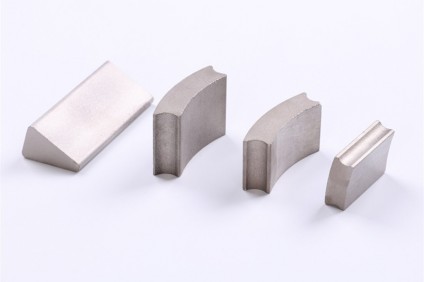Rare Earth Magnets – we stumble upon them everywhere: at the fridge, at the handbag, inside the PC. They serve very exclusive purposes. We depend on the small strength packs to paintings hard. But is that a be counted forever? Or should we be mentally and morally organized for the magnets abruptly falling off the refrigerator at some point?
When is a magnet magnetic?
For us it’s miles clear: the things that attract other metallic gadgets are magnets. This isn’t always incorrect at first. However, many more matters are a magnet within Neodymium Magnet Manufacturer. Because all materials that have so-known as magnetic domains, i.E. Tiny islands made of electrons with the same orientation, are magnetic – even supposing this isn’t always yet seen from the outside.
In order to prompt this magnetic property, all small parts of a piece of metal need to be aligned within the same direction, that is, they should be poled. This is possible if a completely strong magnetic discipline is hung on the material and forces all particles to orient in the equal direction. This concentrates the magnetic force and additionally acts on the outside
The durability or: three enemies of magnets
As fascinating because the magnetic effect is – even with everlasting magnets it is unfortunately no longer permanent. Because even in case you might no longer expect that: magnets lose their energy over time. A magnet has three enemies in particular, which negatively affect its sturdiness.
1.Vibration
Neodymium magnets are insensitive to vibrations. For all other permanent magnets, vibrations must be averted in any respect costs. Depending on how robust the magnetic pressure was, it’s miles sufficient that the magnet falls down once to reduce to rubble its order. This reduces its magnetic pressure or completely destroys it. The greater regularly the magnet is shaken, the lower its magnetic properties to the outside.
2.Temperature
Each magnet has a so-called Curie temperature, which describes the most working temperature. The fantastic strong neodymium magnets are particularly vulnerable to this and lose their magnetic force at 80 ° C. This limit may be extended to 200 ° C by means of numerous additives. Cold can also ensure that the inner order is mixed up and therefore the power is less. Therefore, the endorsed temperatures must be observed.
3.Magnetic fields
Once the order has been created, it could of direction spoil it again. A strong external magnetic field (or more than one) can cause the uniformly aligned particles to mix once more and as a result their pressure not seems to the outside.
The very last boss for Rare Earth Magnets
In fact, magnets may be properly included from their three enemies when nicely stored and used, which shouldn’t lessen their magnetic force. However, there’s one factor that might make even the most powerful magnet ineffective: time or decomposition. Corrosion, i.E. Rust, is probably the best issue that can virtually permanently wreck a magnet.
In order to guard the cloth against oxidation, certain materials (e.G. Cobalt) are brought during manufacture. In addition, the magnets are then included with a layer of, for example, nickel or epoxy resin. If this isn’t always damaged, then a magnet will virtually hold its force for a totally long time.
Just in case
And even if a magnet is demagnetized, it does not lose the ability to be magnetic. To do this, its order must truely be restored through exposing it to a robust magnetic discipline. As long as the material has no longer chemically decomposed, the durability of the magnetic pressure is genuinely almost unlimited – even if it isn’t constantly seen to us. https://www.zhijiangmagnet.com








